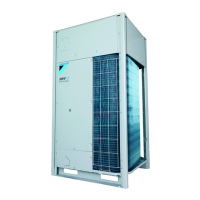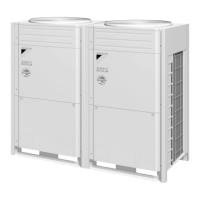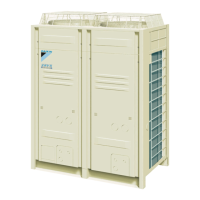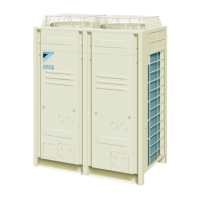What to do if the operation switch on Daikin Heating System does not work well?
- MMitchell HardingAug 5, 2025
If the operation switch on your Daikin Heating System isn't functioning properly, turn OFF the power supply.
What to do if the operation switch on Daikin Heating System does not work well?
If the operation switch on your Daikin Heating System isn't functioning properly, turn OFF the power supply.
Why is my Daikin VRV 5 REYA8A7Y1B Heating System not cooling or heating enough?
If your Daikin Heating System is operating, but the cooling or heating feels insufficient, try these steps: * Ensure that neither the air inlet nor the outlet of the outdoor or indoor unit is blocked; remove any obstructions to allow free airflow. * Make sure the air filter is clean. * Verify the temperature and fan speed settings on your user interface. * Close any open doors or windows to prevent drafts. * Reduce the number of occupants in the room. * Minimize heat sources in the room and block direct sunlight with curtains or blinds. * Adjust the airflow angle.
What to do if Daikin Heating System stops when switching from fan to heating/cooling?
If your Daikin Heating System stops as soon as it switches from fan-only mode to heating or cooling, check the following: 1. Ensure that the air inlet and outlet of both the outdoor and indoor units are free from any obstructions. Clear any obstacles to allow proper airflow. 2. Verify that the home screen is displayed on the user interface.
How to troubleshoot a Daikin VRV 5 REYA8A7Y1B Heating System that does not operate at all?
If your Daikin Heating System isn't operating, please check the following: * Confirm there is no power failure. * Inspect the fuses and breakers. Replace any blown fuses or reset activated breakers.
What to do if Daikin Heating System displays a malfunction code?
If the user interface display on your Daikin Heating System shows the unit number, the operation lamp is flashing, and a malfunction code is displayed, immediately notify your installer and report the malfunction code.
What to do if Daikin Heating System has a refrigerant leak?
If you suspect a refrigerant leak (error code / ) in your Daikin Heating System: * Do NOT turn off the power supply. * Notify your installer and report the malfunction code immediately.
Explains warning symbols and their meanings for safety.
Safety instructions specifically for installers.
Safety guidelines for handling R32 refrigerant equipment.
General safety precautions for operating the unit.
Guidelines for operating the unit safely.
Describes the overall system architecture and component connections.
Steps and precautions to take before operating the unit.
Specifies the temperature and humidity ranges for safe operation.
Detailed instructions on how to operate the system.
Explains how to use the dry program for humidity control.
Instructions for adjusting the air flow direction.
Steps to designate a master user interface for system control.
Describes different control system types available for the unit.
Outlines different operational methods for energy saving.
Explains how comfort levels can be selected and adjusted.
Safety precautions to follow before performing maintenance.
Procedures for maintaining the unit after a prolonged period of non-use.
Steps for preparing the unit before a long period of non-use.
Information and precautions regarding the refrigerant.
Details on after-sales service, warranty, and recommended maintenance.
Provides an overview of error codes and their meanings.
Lists common symptoms that are not actual system malfunctions.
Information on energy efficiency and eco-design standards.
Instructions for safely unpacking the outdoor unit.
Steps to identify and remove accessories from the outdoor unit.
Specifications for the diameters of accessory pipes.
Procedure for removing the transportation stay from specific models.
Explains how to interpret the model identification label.
General information about the VRV 5 heat recovery outdoor unit.
Illustrates the typical system layout and component connections.
Information on combining indoor and outdoor units and available options.
Specifies required floor area for R32 refrigerant installations.
Requirements for system layout to comply with regulations.
Explains how to determine charge limits per BS unit branch.
Step-by-step guide to determine the system's charge limit.
Guidelines for selecting and preparing the installation location.
Procedures for safely opening the unit for access.
Instructions for securely mounting the outdoor unit.
Requirements and materials for preparing refrigerant piping.
Detailed steps and precautions for connecting refrigerant piping.
Procedures for leak testing and vacuum drying refrigerant piping.
Essential precautions before and during refrigerant charging.
General information and process for charging refrigerant.
Properties and safety information related to the refrigerant.
Guide to calculate the necessary amount of additional refrigerant.
Visual flowchart outlining the refrigerant charging process.
Step-by-step instructions for charging the refrigerant.
Overview of the electrical wiring connection process.
Instructions for routing and securing transmission wiring.
Steps for connecting transmission wiring to the unit.
Finalizing the transmission wiring installation.
Instructions for routing and securing the power supply wiring.
Steps for connecting the main power supply to the unit.
How to connect external outputs for alarms or control.
Procedure to test compressor insulation resistance.
Guide to making essential field settings for system configuration.
Configuring settings for energy saving and optimal system operation.
How to activate and use the automatic leak detection function.
Introduction to the commissioning process and its stages.
Safety precautions to be observed during commissioning.
A checklist of items to verify before starting commissioning.
A checklist for tasks to be performed during commissioning.
Information about the system test run and its purpose.
Step-by-step instructions for performing the system test run.
Actions to take if the test run results in an abnormality.
Optional check for BS/indoor unit wiring and piping connections.
Instructions for starting normal operation after commissioning.
Safety precautions to be taken before performing maintenance.
A checklist for annual maintenance of the outdoor unit.
Information on using service mode operations like vacuum or recovery.
General overview of the troubleshooting process.
Safety precautions to follow when troubleshooting the unit.
How to use error codes to diagnose and solve problems.
Details about the refrigerant leak detection system and its operation.
Specifies the required service space around the outdoor unit.
Illustrates the refrigerant piping layout for the outdoor unit.
Shows the electrical wiring connections for the outdoor unit.
Explains warning symbols and their meanings for safety.
Safety instructions specifically for installers.
Safety guidelines for handling R32 refrigerant equipment.
General safety precautions for operating the unit.
Guidelines for operating the unit safely.
Describes the overall system architecture and component connections.
Steps and precautions to take before operating the unit.
Specifies the temperature and humidity ranges for safe operation.
Detailed instructions on how to operate the system.
Explains how to use the dry program for humidity control.
Instructions for adjusting the air flow direction.
Steps to designate a master user interface for system control.
Describes different control system types available for the unit.
Outlines different operational methods for energy saving.
Explains how comfort levels can be selected and adjusted.
Safety precautions to follow before performing maintenance.
Procedures for maintaining the unit after a prolonged period of non-use.
Steps for preparing the unit before a long period of non-use.
Information and precautions regarding the refrigerant.
Details on after-sales service, warranty, and recommended maintenance.
Provides an overview of error codes and their meanings.
Lists common symptoms that are not actual system malfunctions.
Information on energy efficiency and eco-design standards.
Instructions for safely unpacking the outdoor unit.
Steps to identify and remove accessories from the outdoor unit.
Specifications for the diameters of accessory pipes.
Procedure for removing the transportation stay from specific models.
Explains how to interpret the model identification label.
General information about the VRV 5 heat recovery outdoor unit.
Illustrates the typical system layout and component connections.
Information on combining indoor and outdoor units and available options.
Specifies required floor area for R32 refrigerant installations.
Requirements for system layout to comply with regulations.
Explains how to determine charge limits per BS unit branch.
Step-by-step guide to determine the system's charge limit.
Guidelines for selecting and preparing the installation location.
Procedures for safely opening the unit for access.
Instructions for securely mounting the outdoor unit.
Requirements and materials for preparing refrigerant piping.
Detailed steps and precautions for connecting refrigerant piping.
Procedures for leak testing and vacuum drying refrigerant piping.
Essential precautions before and during refrigerant charging.
General information and process for charging refrigerant.
Properties and safety information related to the refrigerant.
Guide to calculate the necessary amount of additional refrigerant.
Visual flowchart outlining the refrigerant charging process.
Step-by-step instructions for charging the refrigerant.
Overview of the electrical wiring connection process.
Instructions for routing and securing transmission wiring.
Steps for connecting transmission wiring to the unit.
Finalizing the transmission wiring installation.
Instructions for routing and securing the power supply wiring.
Steps for connecting the main power supply to the unit.
How to connect external outputs for alarms or control.
Procedure to test compressor insulation resistance.
Guide to making essential field settings for system configuration.
Configuring settings for energy saving and optimal system operation.
How to activate and use the automatic leak detection function.
Introduction to the commissioning process and its stages.
Safety precautions to be observed during commissioning.
A checklist of items to verify before starting commissioning.
A checklist for tasks to be performed during commissioning.
Information about the system test run and its purpose.
Step-by-step instructions for performing the system test run.
Actions to take if the test run results in an abnormality.
Optional check for BS/indoor unit wiring and piping connections.
Instructions for starting normal operation after commissioning.
Safety precautions to be taken before performing maintenance.
A checklist for annual maintenance of the outdoor unit.
Information on using service mode operations like vacuum or recovery.
General overview of the troubleshooting process.
Safety precautions to follow when troubleshooting the unit.
How to use error codes to diagnose and solve problems.
Details about the refrigerant leak detection system and its operation.
Specifies the required service space around the outdoor unit.
Illustrates the refrigerant piping layout for the outdoor unit.
Shows the electrical wiring connections for the outdoor unit.
| Model | VRV 5 REYA8A7Y1B |
|---|---|
| Category | Heating System |
| Type | Heat Pump |
| Refrigerant | R32 |
| Power Supply | 400V, 50Hz, 3-Phase |











